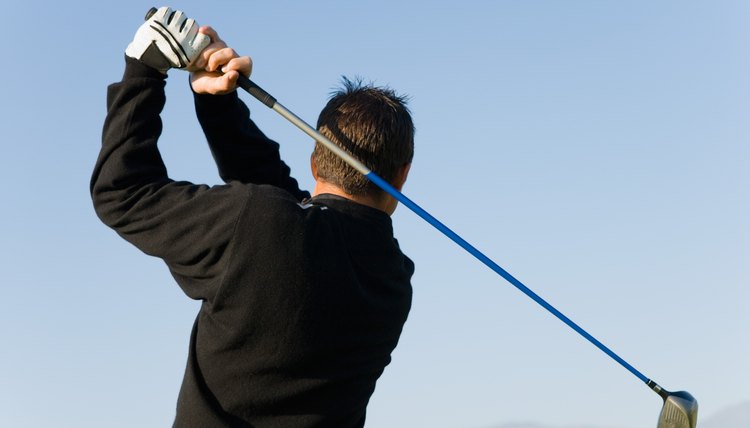When to Start Releasing Hands in a Golf Swing

Players work to perfect a variety of mechanical elements in the golf swing. None of these matter, however, without a properly timed release of the hands. Releasing the hands at the right time not only helps to generate power, it also squares the clubface to the target at the crucial moment of impact with the ball.
How the Release Occurs
Ben Hogan writes about the wrist hinge that occurs during the back swing and the stored energy contained within as critical to generating power in the downswing. As you begin to swing toward the ball, the release of the hands from unhinging the wrists increases clubhead speed leading up to impact. Not only do the hands release from the hinged position, but they ultimately turn over during the follow-through, with wrists hinged in the opposite direction at the completion of the full swing.
Releasing the Hands Too Early
Well-known golf teacher Rick Smith points out that many amateurs make the mistake of releasing the hands too early. Often called casting, this early release occurs when the release starts at the beginning of the downswing. You must maintain the wrist angle and keep the hands in front of the clubhead as you begin swinging toward the ball. Failure to do so will result in poor contact and inconsistent results.
Starting the Release
Hogan identifies the point to begin release as the moment your hands reach waist level. It may initially feel as though you won't be able to square the clubface in time to reach the ball, but this is simply the unusual sensation of a new move -- your body will adjust. LPGA pro Karen Palacios-Jansen suggests using the approach of rotating your right forearm over your left to help grow accustomed to the proper release.
Throwing Clubs
Golf teacher Dr. Jim Suttie proposes an interesting method for testing the timing of your release. He advocates taking an old golf club and segregating yourself to a place where there are no other people -- a large field or grassy area is ideal. Make your swing motion and let go of the club completely as your hands release. If the club goes to the left or the right, you're timing is off. The club will travel straight toward your target if you are properly timing the start of your release.
References
- Golf Tips: The Release
- Ben Hogan's Five Lessons; Ben Hogan and Herbert Warren Wind
- Golf Digest: Cast Away Poor Shots
- Dr. Jim Suttie: Doc's Drills - Club Throwing Drill
Writer Bio
Kevin Bliss began his professional writing career in 1994. Since that time he has completed over 15 feature-length screenplays. He has also had articles published in "The Journal of Modern Screenwriting." Bliss received his Bachelor of Arts in English from Arizona State University and his Master of Science in film (with an emphasis on screenwriting) from Boston University.
